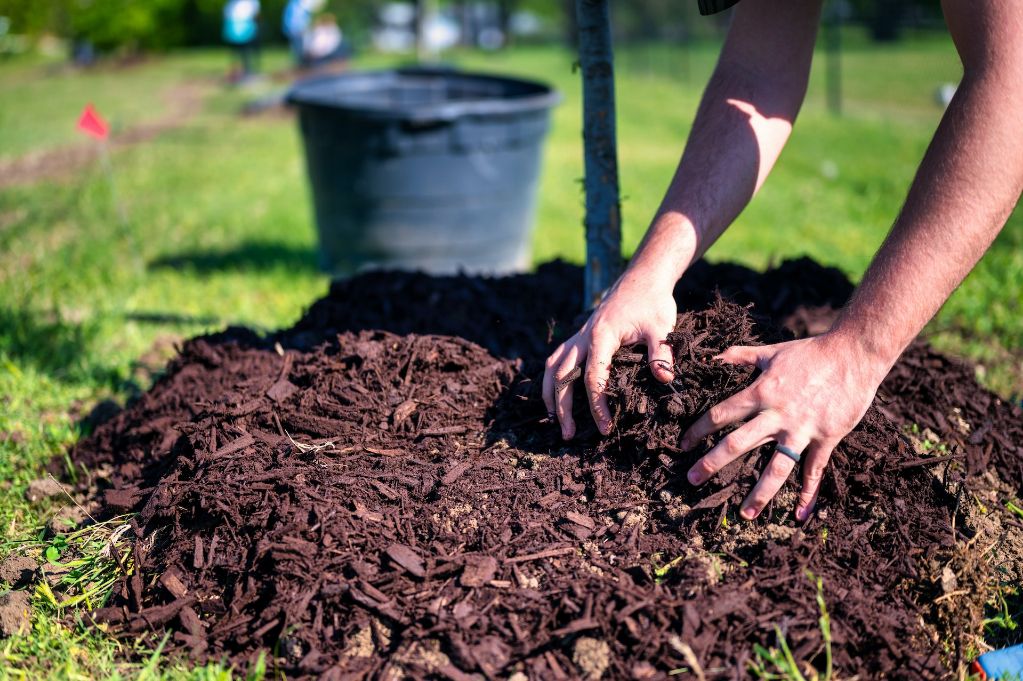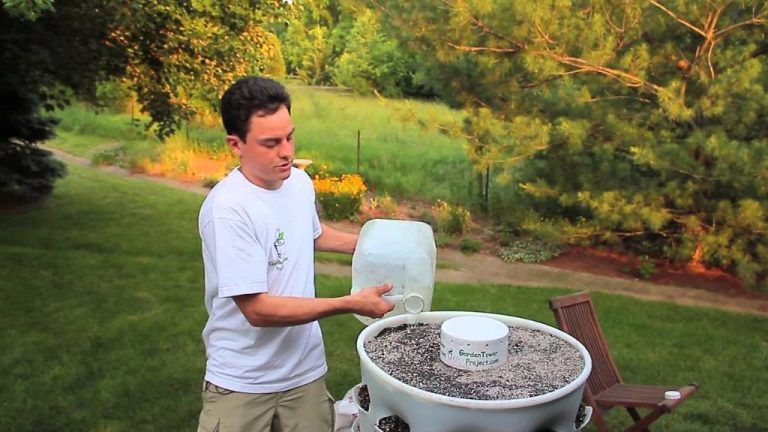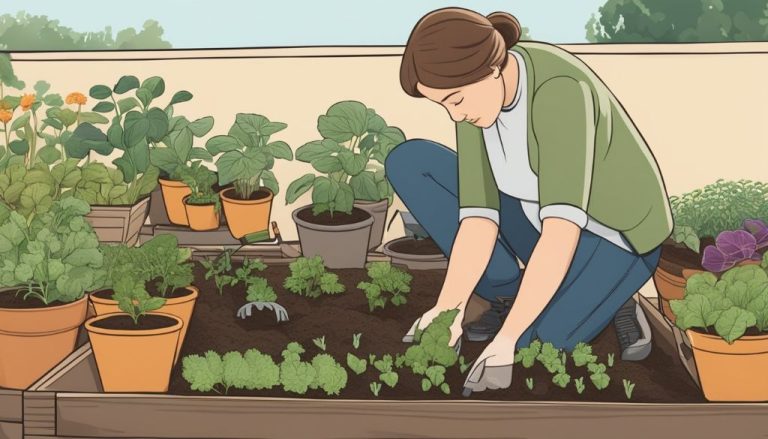Edible Garden Mulching: Benefits And Techniques For Plant Health
Mulch is a protective layer of material spread on top of soil. It is commonly used in vegetable and flower gardens to retain moisture, suppress weeds, regulate soil temperature, and add nutrients to the soil (“Why Your Garden Needs Mulch”, 2022). Mulching provides many important benefits for plant health and garden maintenance.
Moisture Retention
Mulch helps retain moisture in the soil by preventing evaporation. As the sun beats down on bare soil, moisture evaporates into the air. Mulch forms a protective barrier that stops this evaporation process. By shading the soil, mulches reduce the soil temperature and slow the evaporation of water (1). Studies show mulches can reduce water needs by as much as two-thirds by conserving soil moisture (2). The organic materials in mulch also help absorb and retain water when it rains or when watering the garden.
Using mulch reduces the need for frequent watering. Plants in mulched beds will stay consistently moist for longer compared to plants in unmulched beds. Less watering saves time and effort for the gardener. It also encourages plants to develop deep roots to find moisture stored in the soil rather than relying on frequent shallow watering.
Sources:
(1) https://www.growveg.com/guides/mulching-to-save-time-and-water-in-your-garden/
(2) https://www.growveg.com/guides/mulching-to-save-time-and-water-in-your-garden/
Weed Suppression
Mulch prevents weeds by blocking sunlight from reaching weed seeds. By covering the soil with a 2-3 inch layer of organic mulch, you deprive potential weeds of the light they need to germinate and grow (Scotts). Without sufficient light penetration, fewer weeds will sprout up from the soil underneath the mulch.
Mulching also reduces the need for weeding and herbicides. The mulch barrier minimizes weed growth, saving you labor on manually removing weeds. You’ll also avoid having to use as many chemical weed killers since fewer weeds will establish themselves when mulched (AgriLife Today). Organic mulch provides a natural weed deterrent.
Soil Nutrients
Mulch provides many benefits for improving soil nutrients and fertility in the garden. As the mulch breaks down over time, it adds valuable organic matter to the soil (https://www.finegardening.com/article/dont-treat-your-soil-like-dirt). Organic mulches such as wood chips, leaves, straw, and compost will decompose and encourage microbial activity in the soil. This improves the soil structure, creating a better environment for earthworms and beneficial microorganisms.
The organic matter from decomposing mulch releases nutrients like nitrogen, phosphorus and potassium into the soil so they are available for plant uptake (https://www.landscapemulch.com/blog/5-reasons-you-should-use-mulch-every-year/). Mulch also improves moisture retention and protects against nutrient leaching or runoff. Overall, mulch increases soil fertility, providing plants access to more of the nutrients they need to grow and thrive. It creates the ideal growing conditions to support healthy plant development.
Soil Temperature
Mulch helps moderate soil temperature by providing insulation. In the summer, mulch keeps soil cooler by protecting it from direct sunlight. The mulch layer shades the soil surface and prevents it from heating up. One source notes that mulch can lower soil temperatures by 8-10°F compared to bare soil (https://gardenprofessors.com).
In winter, mulch has the opposite effect and keeps soil warmer. The mulch layer acts as insulation to retain heat in the soil. One study found that mulched soil was on average 5°F warmer than bare soil in winter (https://www.ncbi.nlm.nih.gov/pmc/articles/PMC6022731/). The moderated soil temperatures that mulch provides are beneficial for plant growth and health.
Types of Organic Mulch

There are several types of organic mulch to consider for your edible garden. Popular options include:
Wood Chips/Bark Mulch
Wood chips or bark mulch provides excellent weed suppression and moisture retention. It breaks down slowly over time to improve soil structure. The main downside is it can temporarily tie up soil nitrogen as it decomposes (FineGardening, 2022).
Leaf Mulch
Leaf mulch such as oak leaves or maple leaves is free and readily available. It retains moisture well but decomposes more quickly than wood mulch. Leaf mulch may mat down over time, preventing water penetration. Shredded leaves offer better aeration (GardenersWorld, 2020).
Straw
Straw mulch is an affordable option that suppresses weeds and insulates soil. It decomposes quickly, so will need reapplication. Straw can harbor rodents and spread weed seeds if not from a weed-free source (LawnLove, 2023).
Compost
Compost improves soil structure while suppressing weeds. It releases nutrients as it breaks down. Compost mulch is less effective at moisture retention than other options. It may also contain weed seeds if not properly heated (LawnLove, 2023).
Newspaper/Cardboard
Newspaper or cardboard sheets offer excellent weed suppression. Overlap sheets by 6 inches and wet thoroughly to mat it down. The mulch will break down over one season. Avoid glossy paper with colored inks (FineGardening, 2022).
Mulch Application
Proper mulch application is important for gaining the full benefits. Apply 2-4 inches of mulch evenly across the area after plants emerge in spring, being careful not to pile mulch against plant stems. Organic mulches should be replenished annually as they decompose. Remove old mulch if it becomes compacted and prevents water penetration. When reapplying, rake the remaining mulch to break up any matted sections before adding the new layer on top.
The ideal mulch depth is around 3 inches. Less than 2 inches may not provide adequate weed suppression and moisture retention. Over 4 inches can prevent water and air from reaching plant roots. Take care not to over-mulch around trees and shrubs. Keep mulch a few inches away from trunks and stems to prevent disease and pest issues.
For drip irrigation systems, mulch can be applied after the drip lines are in place. Make small openings in the mulch to bring emitters in direct contact with the soil. This allows the water to properly soak in. Drip irrigation combined with thick mulch maintains optimal soil moisture.
Living Mulch
Living mulch refers to the practice of growing low-maintenance and drought-resistant ground cover plants, also known as cover crops, alongside the main crop in the garden. Living mulch can provide many benefits but also requires some considerations when implementing in the garden.
Some benefits of living mulch include:
- Weed suppression – The low-growing ground cover crops will compete with weeds for space, blocking sunlight access and minimizing weed growth. Cover crops like clover and alfalfa are effective weed suppressors.
- Moisture retention – The living mulch helps hold in soil moisture that would otherwise evaporate. This preserves water and reduces the need for frequent watering.
- Soil health – As a legume crop, clover adds nitrogen to the soil. Other cover crops can improve the soil biodiversity and aeration.
Source: https://www.ruralsprout.com/grow-living-mulch/
When using living mulch, it’s important to consider:
- Proper management to prevent overgrowth and competition for nutrients and water
- The right low-growing crops that won’t impede the main crop’s growth and sunlight access
- Thorough watering since the living mulch absorbs moisture
With the right cover crop selection and proper care, living mulch can be a sustainable and effective alternative mulching method for the edible garden.
Mulch Alternatives
As an alternative to organic mulch, synthetic mulch films and landscape fabrics can be used for weed suppression and moisture retention. Synthetic mulches are man-made products like black plastic sheeting, colored plastic mulches, rubber mulch, and landscape fabric [1].
The main advantage of synthetic mulches is their durability. Materials like plastic sheeting and rubber mulch can last multiple seasons without breaking down [2]. This means less frequent mulch replacement. Synthetic mulches also tend to suppress weeds more effectively than organic mulches. However, plastic mulches do not improve soil health or supply nutrients. Excess plastic can also end up in landfills.
Overall, synthetic mulches are best for short-term weed control and moisture retention. For improving soil health and providing organic matter, natural organic mulches are preferable. Consider pros and cons of durability, weed suppression, environmental impact, and cost when choosing between synthetic and organic [2]. Using a combination of mulch types in different areas of the landscape can provide optimal benefits.
Conclusion
In conclusion, mulching an edible garden provides many benefits that enhance overall plant health and yield. Proper mulching helps retain soil moisture, suppress weeds, and add nutrients back into the soil as the mulch breaks down over time. Mulch also insulates the soil, helping to maintain optimal temperatures for plant growth. Choosing the right organic mulch like bark chips, straw, leaves, or compost, and applying a 2-4 inch layer at the start of each growing season is ideal.
Mulching is one of the simplest but most effective ways to improve an edible garden’s production and health. The benefits to moisture retention, weeding, soil nutrition, and temperature regulation cannot be understated. Any gardener looking to maximize plant health and yields from their edible garden should strongly consider utilizing mulch. The effort of mulch application is minor compared to the many rewards it will provide throughout the entire growing season.






